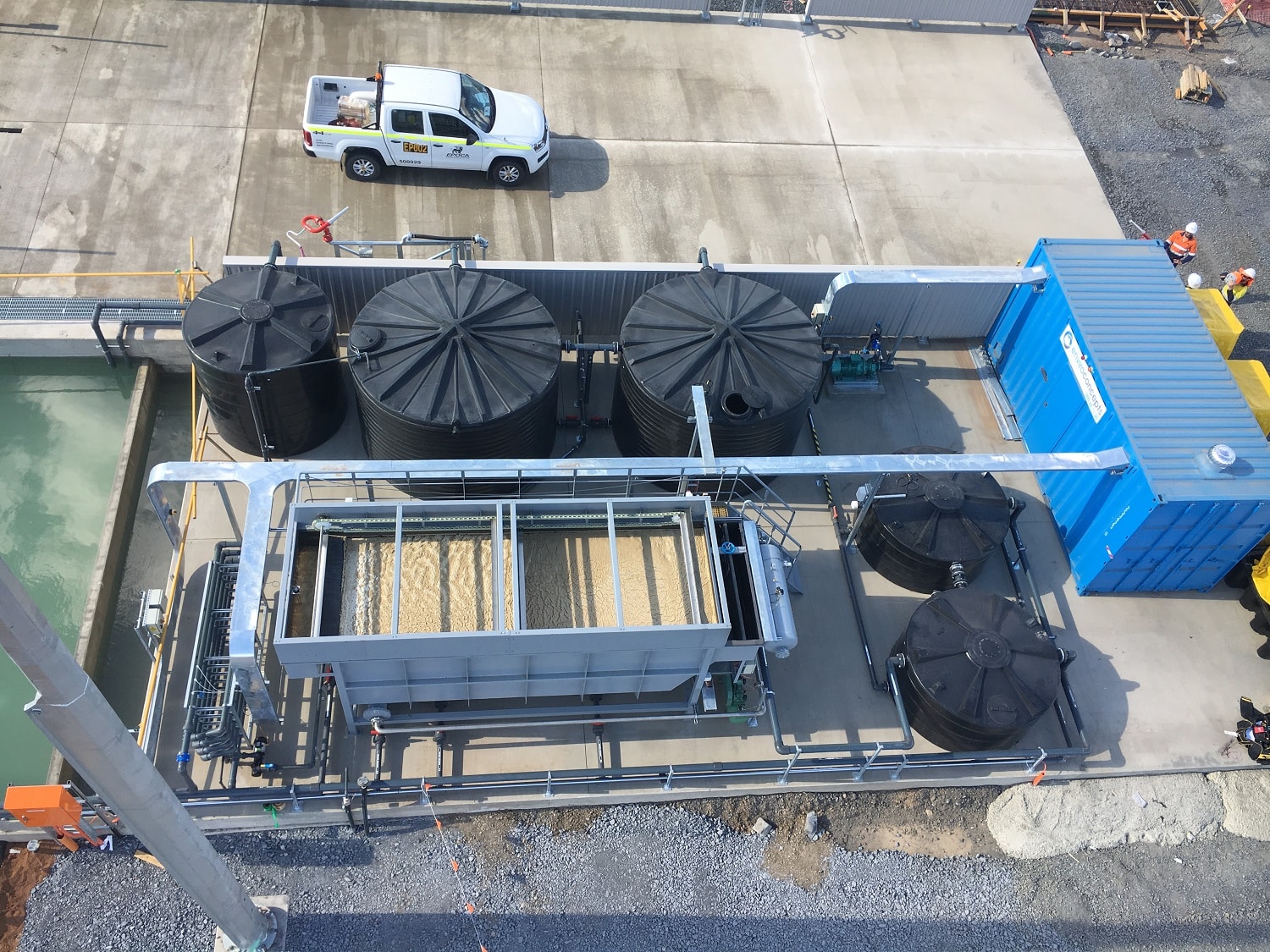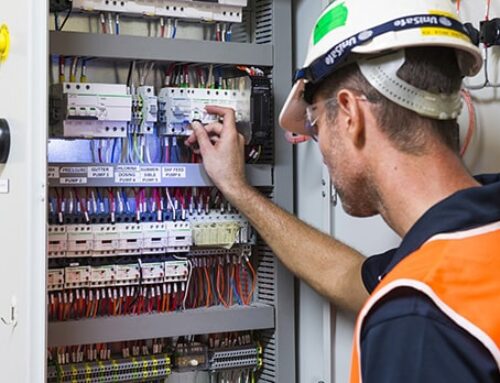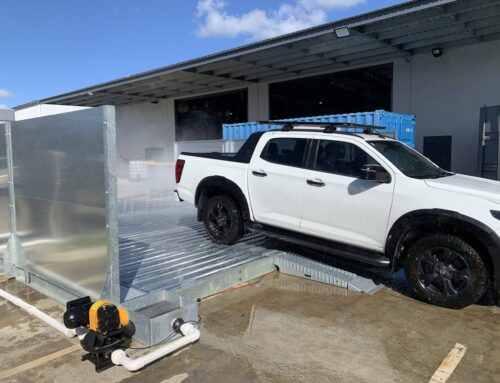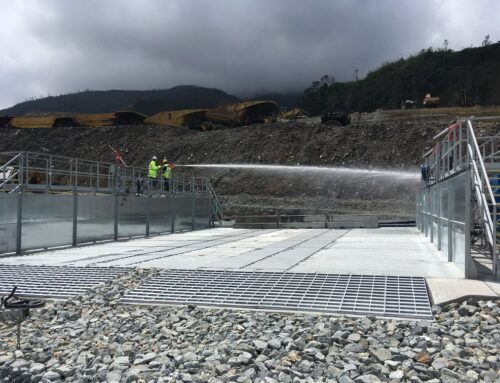If you operate a vehicle wash facility, automotive workshop, construction site, or heavy equipment site, understanding wash bay compliance is critical to avoid the case of council penalties and operational disruptions. Council rejections, environmental fines, and downtime are all real risks that can derail your operations if your wash bay system setup isn’t compliant with Australian regulations.
Don’t let generic solutions hinder your operations. Whether you’re managing wash water or wastewater from heavy mining equipment and construction sites, or recycling water in a vehicle wash facility, custom, locally manufactured wash bays are the most effective path to operational efficiency and full environmental compliance.
What Is Wash Bay Compliance — And What Happens If You Ignore It?
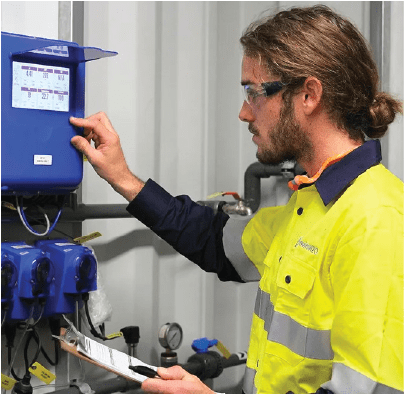
Wash bay compliance refers to the design, installation, and ongoing operation of wash bays in accordance with local authority and water authority guidelines across Australia. These guidelines are intended to prevent untreated wastewater—often laden with oil, chemicals, and solids—from entering stormwater systems or natural waterways.
Failing to comply with wash bay regulations can result in:
- The case of heavy fines, which average over $100,000 for environmental breaches
- Mandatory retrofitting or shutdowns of non-compliant systems
- Reputational damage among clients, local residents, and regulatory bodies
- Disruptions to vehicle washing operations, causing missed deadlines and idle equipment
You need custom solutions, not one-size-fits-all. Whether it’s oil separators, flush diversion systems, or bunded containment, the case of compliance isn’t optional—it’s essential.
The Wash Bay Approval Checklist: Every Step You Can’t Miss
The case of securing wash bay system approvals involves more than submitting paperwork. A compliant system needs to meet environmental standards across design, treatment, and discharge.
Here’s a compliance checklist every business should follow:
- Initial Site Assessment
- Evaluate drainage paths, ground slope, access points, and wash bay floor specifications.
- Identify proximity to sensitive areas, such as stormwater drains and chemical storage.
- Customised Design Plans
- Include water treatment systems such as oil water separators, silt traps, and holding tanks.
- Define bunding and perimeter requirements to contain all wash water on site.
- Trade Waste Approvals
- Submit wastewater discharge applications to the relevant water authority.
- Provide detailed schematics showing discharge flow, recycling systems, and treatment stages.
- Installation of Modular Equipment
- Use portable wash bay components that are pre-engineered for compliance.
- Include high-quality products designed to accommodate your vehicle types and usage.
- Certification and Inspection
- Book inspections through your local council or independent auditors.
- Address any feedback immediately to ensure fast approval.
- Routine Maintenance Planning
- Set service schedules for flush diversion systems, bunded areas, and treatment equipment.
- Maintain logs for audits and council review.
Want custom wash bays fast? Yes, it’s possible—with Australian-made modular portable wash bays and full documentation from day one. Contact our team at EnviroConcepts today!
Avoiding Council Rejections: Getting Your Wash Bay Approved the First Time
Delays in council approvals often stem from poor planning or incomplete documentation. To avoid rework, repair services, and expensive setbacks, ensure your wash bay application meets both local environmental and planning requirements the first time.
Council rejections often occur due to:
- Incomplete site maps or wash bay designs
- Missing information on wastewater treatment systems
- Lack of clarity on stormwater separation and bunding
- Inadequate oil separation or containment plans
To succeed:
- Work with a provider that includes council-ready documentation in their services
- Use modular systems that meet trade waste limits out of the box
- Include all equipment specifications, like flush diversion systems, silt traps, and holding tanks, in your submission
Think custom solutions take too long? Think again. Locally supplied portable wash bay systems dramatically cut approval timelines with built-in compliance features. Contact us today for trusted portable wash bay solutions for various industries, from construction to mining and vehicle washing.
How to Design a Compliant Wash Bay (Without Getting It Wrong)

Wash bay design impacts compliance, operational efficiency, and water use. An effective design incorporates control, treatment, and containment components that prevent contamination and streamline water recycling.
Critical design features include:
- Sloped, non-porous wash bay floors directing wash water into treatment areas
- Perimeter bunding to isolate the wash zone from stormwater
- Silt traps and filtration screens to prevent clogging in downstream wash bays
- Oil separators to remove hydrocarbons before water is discharged or recycled
- Holding tanks that store and separate solids, oils, and water prior to treatment
- Flush diversion systems that sense rainfall and redirect contaminated water appropriately
Wash bays must also consider vertical clearance, especially in mining and transport sectors where cranes or high-clearance vehicles are involved. Oversized equipment and mobile operations require flexible, portable systems tailored to space constraints and traffic flow.
Australian-made systems last 30% longer—invest wisely. Don’t let subpar overseas designs cause failures during inspection services or audits. Contact EnviroConcepts for trusted, Australian-made portable wash bays!
Wastewater Treatment Rules for Wash Bays: What the Law Actually Says
Australian environmental regulations classify wash water from commercial and industrial sites as trade waste. This means it must be pre-treated after any washing before being discharged to the sewer, and never released directly to stormwater.
Key legal requirements include:
- Oil water separators and sedimentation tanks to reduce pollutants
- Water authority permits defining discharge quality thresholds
- Flow control devices such as valves and bunded pits to prevent overflow
- Water recycling systems where feasible to reduce discharge volume
Trade waste policies differ by region, but the following principles apply nationwide:
- Businesses must ensure that all wash bay discharge meets the local water authority’s acceptance criteria
- Discharge into stormwater systems after washing vehicles or equipment is illegal unless treated and approved
- Recycled water reused onsite must meet Class A+ standards if used for further cleaning or irrigation
Wash bay compliance requires engineered systems designed with these regulations in mind. Ask your supplier for documentation showing their equipment meets trade waste and environmental standards before purchasing. For expert advice and fully compliant solutions, contact EnviroConcepts today.
Top 7 Compliance Mistakes That Lead to Fines (And How to Avoid Them)
Even well-meaning businesses face penalties if they miss critical compliance steps. Here are seven common missteps:
- No Trade Waste Permit
Discharging untreated wastewater without permission is one of the fastest ways to incur fines. - Improper Equipment
Using low-capacity oil separators or generic bunding that fails under pressure. - Unroofed Bays Without Diversion
Allowing rainwater to carry waste into stormwater drains without using a flush diversion system. - Inadequate Holding Tanks
Tanks that are too small to handle peak flow periods or large volumes of solids. - Missing or Faulty Silt Traps
Causing buildup and blockages in downstream water treatment systems. - Generic Wash Bay Layouts
Designs that don’t accommodate heavy vehicles or specialized equipage. - Lack of Documentation
Incomplete records of maintenance, water recycling, or council approvals.
Avoid downtime caused by subpar hardware and unreliable services. Compliance starts with proper planning, quality products, and regular inspections.
Maintenance Mistakes That Could Cost You Compliance (and Money)
Maintaining your wash bay, whether portable or permanent, isn’t just about performance—it’s also a legal requirement. Many councils and water authorities require documented service and inspection schedules.
Common maintenance oversights include:
- Skipping scheduled cleaning of oil separators and sediment pits
- Letting silt traps overflow, reducing flow, and efficiency
- Failing to test water quality before reuse or discharge
- Operating without up-to-date inspection records for council audits
Establish a clear routine:
- Inspect and clean treatment components weekly
- Schedule pump outs of holding tanks monthly or as needed
- Calibrate sensors in flush diversion systems every quarter
- Keep maintenance logs accessible and updated
Efficient systems reduce water usage and costs. A well-maintained wash bay system, whether portable or permanent, not only ensures legal compliance but also boosts your operational productivity by preventing unexpected failures.
Compliant Wash Bays by Industry: What Businesses Must Know
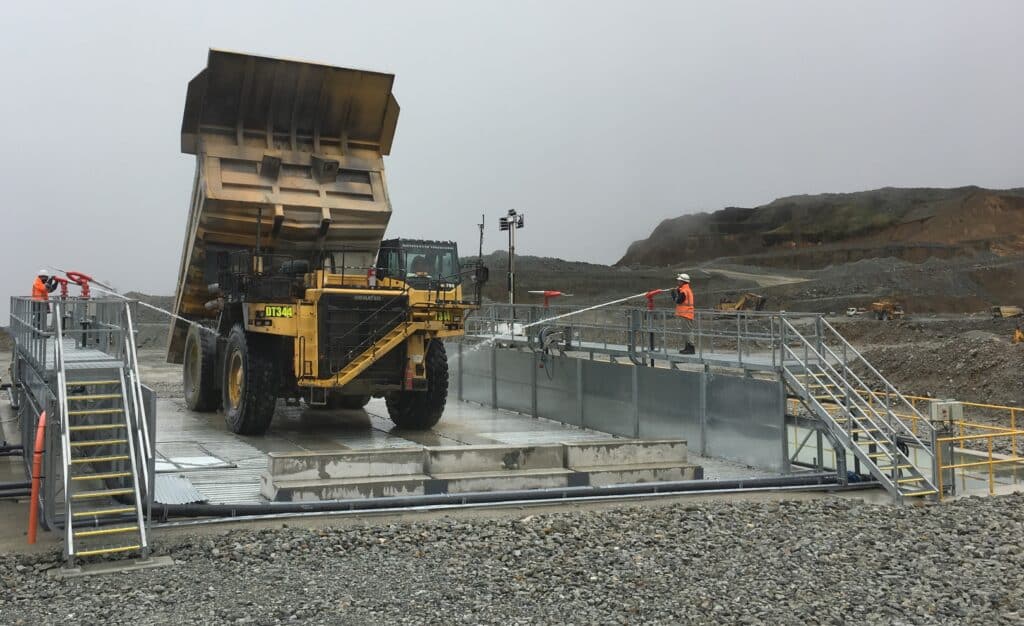
Wash bay requirements vary by sector, and your solution must be designed accordingly. Here’s how key industries differ:
Mining and Construction
- Must accommodate heavy vehicles and equipment
- Require reinforced modular pads and bunded wash zones
- Common features: oil separators, oversized holding tanks, underbody cleaning
Transport and Automotive
- Deal with high volumes of vehicles daily
- Emphasis on water recycling systems and quick wash cycles
- Require silt traps, shampoo control, and odour management
Hire and Equipment Depots
- Often use portable wash bay systems to serve rotating locations
- Need mobile bunding, easy-to-deploy wash mats, and rapid drainage
Industrial Workshops
- Focus on chemical containment, high-pressure washers, and regular maintenance
- Require documentation for all chemicals used during cleaning
Whether you operate in a mining zone, urban depot, or industrial workshop, your wash bay must be customised to your application and environmental footprint.
3-Step Process to Ensure Compliance with EnviroConcepts
| Step | Description |
| 1 | Assessment – We evaluate your needs, location, vehicle types, and site restrictions. |
| 2 | Design & Installation – We provide custom wash bay systems, complete with treatment and discharge equipment. |
| 3 | Support & Maintenance – Ongoing service, documentation, and upgrades to keep your system running smoothly. |
Take the Next Step Toward Guaranteed Wash Bay Compliance
Need a tailored wash bay system that ensures full compliance without delays? EnviroConcepts provides customisable, Australian-made wash bays, bunding, water treatment packages, and wastewater systems that meet industry standards across Australia.
Get in touch with our team today for an engineered solution that’s compliant, efficient, and built to last.

